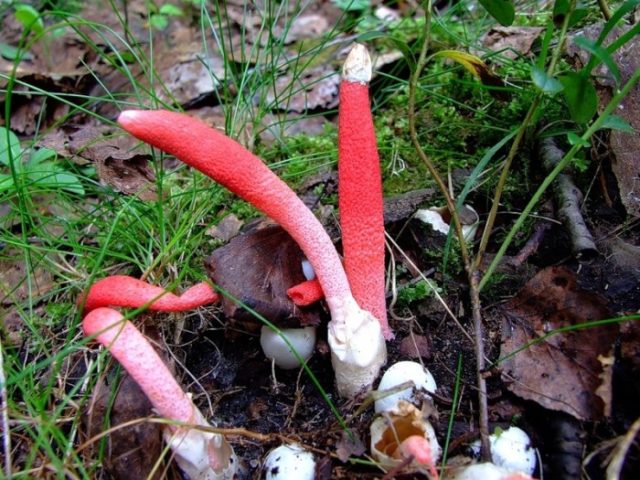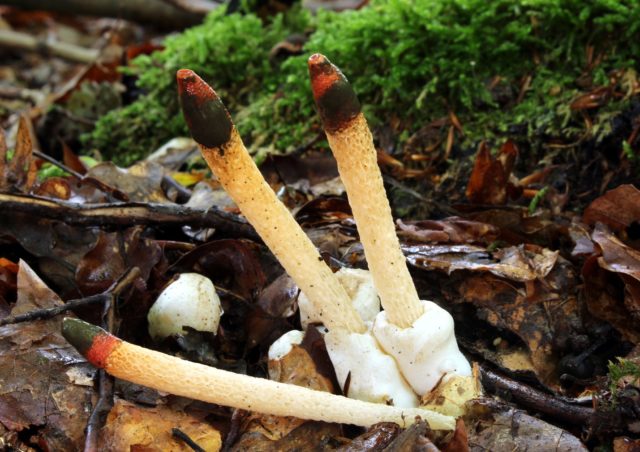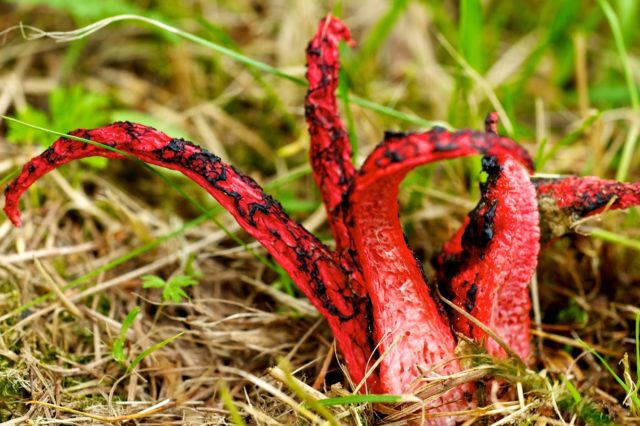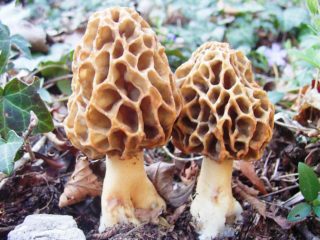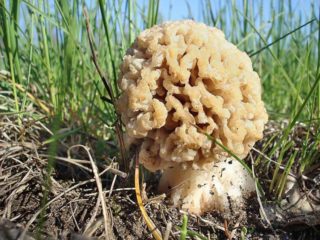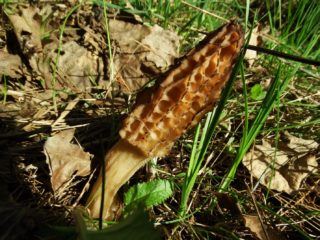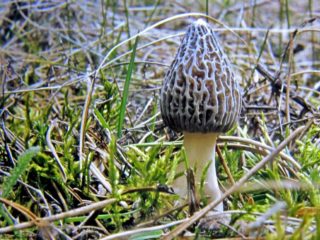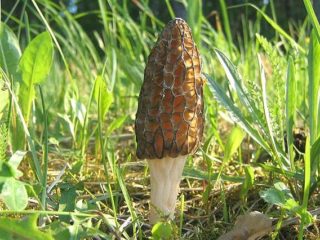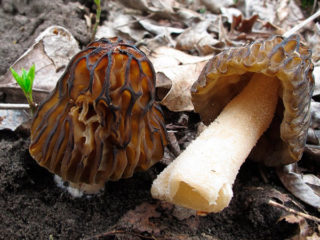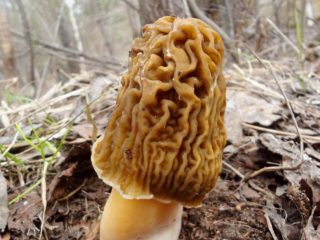Content
The stinking morel is a mushroom that can be found everywhere, has an unpleasant odor, is not suitable for consumption, but is extremely popular among experienced mushroom pickers. This is due to the medicinal properties of the culture.
Where do stinky morels grow?
The stinking morel, or Mutinus Ravenel as the mushroom is officially called, likes fertile, moist soil. Therefore, it can be found not only in deciduous forests, but also in urban bushes, abandoned gardens and where there is rotting wood. The largest harvest can be harvested immediately after the warm rain passes.
In recent years, the stinking morel, which was once a rarity, can be found in summer cottages, in well-kept gardens under lilac bushes, and in city parks.Therefore, many owners of land plots are even thinking about how to breed this mushroom, which even breeders were unable to propagate at one time.
What smelly morels look like
The formation of the fruiting body goes through several stages:
- At an early age, the mushroom looks like an ordinary egg, the surface of which is leathery, smooth, and white in color. The egg is approximately 2 cm wide and no more than 4 cm high.
- Then the body of the mushroom itself begins to grow from the egg, and the egg “bursts” into two parts. A hollow leg appears from the crevice, the thickness of which does not exceed 1 cm, and its length is about 8 cm. Pinkish, it has a red-crimson-like pointed cap at the end.
- When ripe, a coating of spore-bearing mucus forms on this point, which has a very unpleasant appearance (smeared brown liquid with an olive tint) and a fetid odor. Having reached a height of 15 cm, the mushroom stops growing.
- When the stinking morel is fully ripe, it turns deep brown or gray and falls, unable to stay on the egg.
Is it possible to eat smelly morels?
The stinking morel is an inedible, poisonous mushroom. It is used only for the preparation of medicines, with strict adherence to the provided recipe.
It is also worth noting that the toxic substances of this representative remain on the surfaces with which it came into contact. Therefore, collecting it and edible mushrooms in one basket is prohibited. In addition, after working with smelly morels, you need to thoroughly wash your hands, wash things and treat the equipment you use.
Similar species
The stinking morel also has doubles, which also emit an unpleasant specific odor and some external similarities.
- Veselka. First of all, the stinky morel is confused with the fungus, which is externally different from it, but is also a source of an unpleasant odor.
- Dog mutin, or Mutinus caninus. Its difference lies in the color (the color of the fruiting body can be whitish or dirty orange, and the pointed tip is colored orange), as well as in the color of the spore mass, which is formed during the ripening of the mushroom (it is olive green and very sticky).Important! Dog mucus can grow in close proximity to stinking morel, so when harvesting it is important to pay special attention to differences in the appearance of a particular specimen.
- Stinkhorn, or Mutinus elegans. It is also called the devil's stink, dog stink. Each of the names given by the people very accurately describes the appearance of the mushroom, noting its special smell. Stinkhorn also grows on fertile lands, preferring moisture and warmth.
Attention! Eating this species is strictly prohibited.
The use of stinking morels in medicine
Morels have long been considered medicinal. They were used as components for the preparation of tinctures and decoctions, consumed fresh and dried. There are several areas of medicine (laboratory proven) in which the product is used. Among them are the following:
- Problems with the digestive system. Morel can be used for gastritis, ulcers and colitis. It can heal wounds in the intestines and on the walls of the stomach, cope with toxins and improve peristalsis.
- Disorders of the musculoskeletal system. People suffering from gout, age-related changes in joints, arthrosis and arthritis are treated with morels.
- The cardiovascular system. The product is a pressure stabilizer, helps cleanse blood vessels and restore and strengthen them. Used for hypertension and thrombosis.
- The immune system. When consuming stinky morel, the body is strengthened and its resistance to various viral and fungal diseases increases.
- Epidermis. This mushroom can cure almost any skin problem: dermatitis of various origins, psoriasis and trophic ulcers, fungus (including nails) and skin damage (wounds, scratches, burns). Stinky morel can normalize the condition of the skin, making it more elastic and healthy.
- Genitourinary system. The variety has proven itself to be the best in terms of treating all diseases associated with the genitourinary system. It is used to treat female bacteriosis, cystitis and prostatitis, pyelonephritis, and restore erection.
- Since ancient times, the stinking morel was also used as an aphrodisiac, but there was no conclusive evidence for this. Only recently have scientists been able to discover substances in its composition that are similar to male sex hormones. Therefore, today the version about the influence of the mushroom on male power is a proven fact.
- Oncology.Despite the fact that there is no official confirmation that stinking morel contains any substances that can cope with metastases, scientists do not deny the fact that this culture can strengthen the body, giving it the strength to fight cancer. In addition, recent research by Siberian scientists has shown that the mushroom, when it is in the initial stage of its development (egg), contains polysaccharides that produce perforin. This substance is able to recognize cancer cells and inhibit their development. In the initial stages of cancer, the use of perforin gives hope for increasing the life expectancy of cancer patients, as well as for their complete cure.
Conclusion
The stinking morel is a useful, but inedible mushroom. It can only be used for medical purposes and with extreme caution. Even poisonous mushrooms should only be collected away from roads and industrial enterprises.

